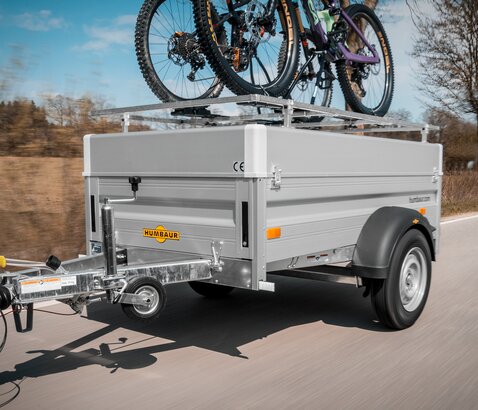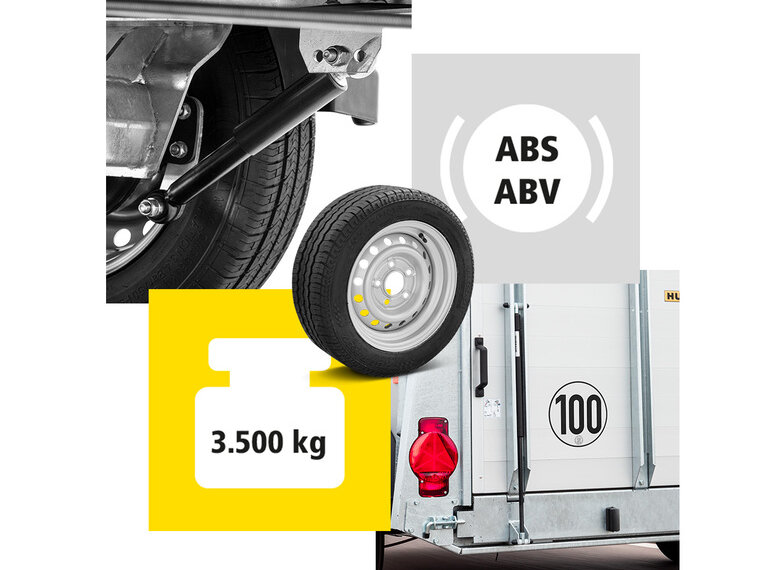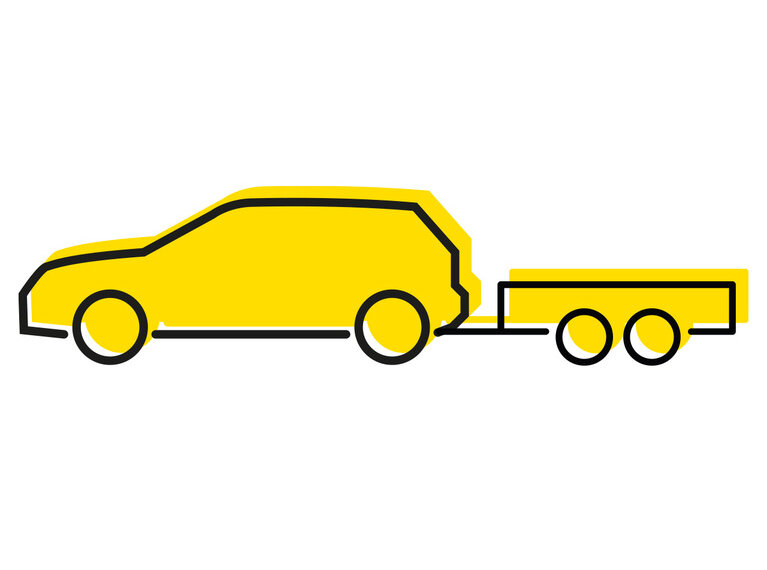
Permissible speeds
The permissible maximum speed for passenger car-trailer combinations varies from country to country. We have created a summary for you that shows the permissible maximum speed with a trailer in various countries, plus details of any additional requirements.
80 km/h or 100 km/h regulation in Germany
The maximum speed for a car-trailer combination in urban areas in Germany is generally 50 km/h. The maximum speed in extra-urban areas is 80 km/h.
In some situations, however, the relevant traffic authorities may grant a special permit to travel at speeds of up to 100 km/h. If you have been granted this permit, you are permitted to drive your car-trailer combination at speeds of up to 100 km/h on motorways and dual carriageways (but not country roads!), instead of up to 80 km/h. You will need a speed limit sticker to certify that you are permitted to drive at speeds of up to 100 km/h; this can be obtained from your vehicle licensing agency.

Requirements
The maximum weight of the towing vehicle must not exceed 3,500 kg.
The towing vehicle must be equipped with an anti-lock braking system.
The trailer tyres must be approved for speeds of at least 120 km/h (speed rating L). This is standard with Humbaur trailers. The tyres must also be no more than six years old.
You must attach a 100-km/h sticker to the rear of the trailer.
If the trailer is braked, it must also be fitted with hydraulic wheel shock absorbers.

Calculator
Certain weight ratios must be observed between the trailer and towing vehicle. The permissible maximum weight (also known as GVW, or gross vehicle weight) of a trailer being certified to travel at up to 100 km/h depends on the unladen weight of the towing vehicle. The unladen weight of the towing vehicle is multiplied by a specific factor. This factor is:
- 0.3 for unbraked trailers and braked trailers without shock absorbers
- 1.1 for braked trailers with shock absorbers
- 1.2 if a stabiliser coupling (AKS) is fitted and trailer is braked and equipped with shock absorber
If the actual permissible maximum weight of the trailer exceeds the calculated value, the trailer load capacity must be reduced. Please contact a technical service provider to help with this. In addition, observe the maximum trailer load specified in the registration documents for the towing vehicle.
Overview of permissible maximum speeds for car-trailer combinations
GERMANY
AUSTRIA
Switzerland
Speed limits for trailer combinations in Austria
In Austria, the permissible maximum speeds for trailer combinations are based on the weight rating. In urban areas, the permissible maximum speed is generally 50 km/h; in extra-urban areas and on motorways and dual carriageways it varies between 70 km/h and 100 km/h.
The information provided here has been carefully compiled but no guarantee is made of correctness and the information is not legally binding. Humbaur GmbH accepts no liability for inaccuracies or damages.